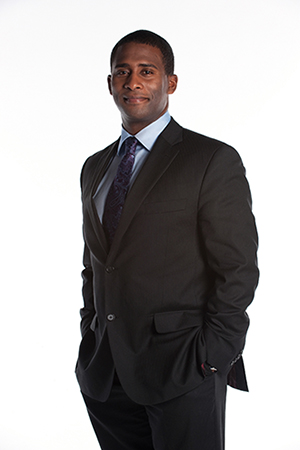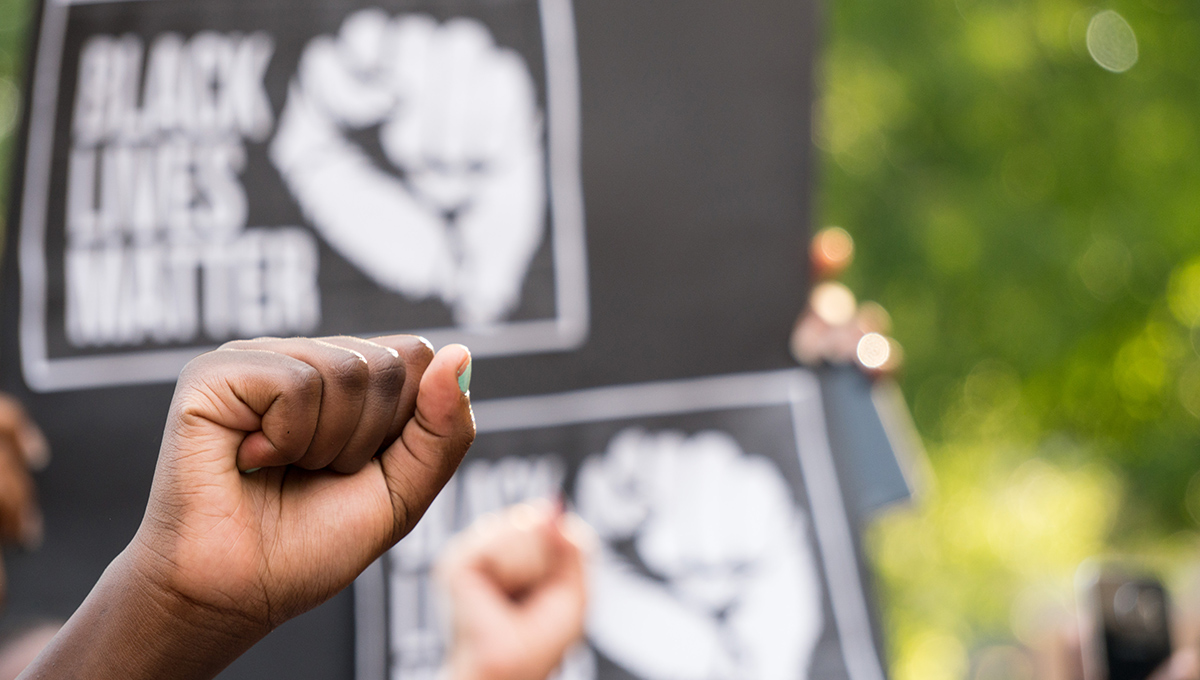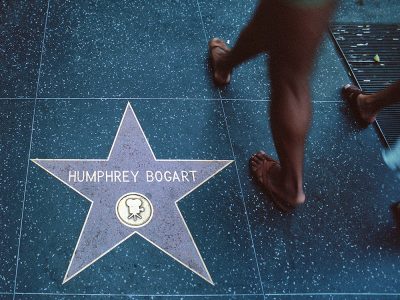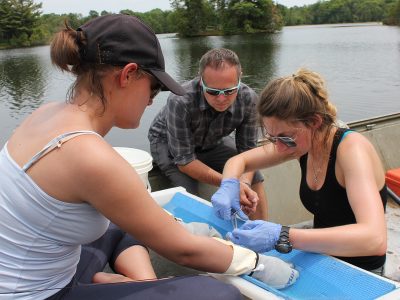By Tyrone Burke
Carleton University’s journalism program is offering a new course on journalism and race, taught by one of Ottawa’s leading voices on the subject, CBC Ottawa News anchor Adrian Harewood.
“Understanding race is fundamental to understanding our world,” says Harewood, who is also an adjunct professor at Carleton’s School of Journalism and Communication.
“If you are going to tell the stories of your community, you don’t only need to understand race, you also need to understand class, gender, sexuality and disability. All of these are part of the reality of your community. You need to understand them to provide your audience with sustenance, critical analysis and insight.”

Adrian Harewood (Photo: Annemarie Gruden)
This fall, Harewood is bringing race and diversity to the forefront in JOUR 5508 – Journalism, Race and Diversity. The new course connects Carleton students with prominent journalists working on a variety of media platforms, including web, television, podcasts and print publishing.
Some of the strongest voices in Canadian journalism are joining the course as guest speakers, including Denise Balkisoon, executive editor of of Chatelaine; Connie Walker, producer the CBC podcast Missing and Murdered; and best-selling author Desmond Cole. Before he wrote The Skin We’re In, Cole was pressured to leave his column at The Toronto Star for failing to abide by conditions that precluded his activism for black Canadians.
And JOUR 5508 will incorporate international perspectives. The Guardian contributor Gary Younge has already spoken to the class, and Nichelle Smith will also be participating, a co-ordinating editor with USA Today. Her black history month sections provide a realistic look at African American history – and a possible model for critical approaches to Canada’s own history. If all of this sounds like the kind of course you’d want to sit in on, you can. JOUR 5508 will be made in to a podcast that will be available to the public.
Harewood has lofty aspirations for the course – he hopes it can help lay a foundational understanding of race and identity that will give a new generation of journalists a more nuanced understanding of the communities where they live. In the years to come, their work can – and will – shape how Canadians perceive the world.
“In a sense, this will be a little bit like a civics course – it provides students with the analytical tools to ask better questions,” says Harewood.
“Understanding race equips students to look at the world from multiple perspectives, and to challenge mainstream frames of reference. It’s a tool that enables a journalist to be disruptive – to go out in to the world and tell stories with breadth, depth and perspective.”
But change rarely comes without struggle, and in the racial reckoning that gripped the world in the wake of George Floyd’s murder in the spring of 2020, a group of current and former Carleton students sought to seize lasting change from a galvanizing moment. Together, they crafted a call to action to address the inequities that they experienced while studying at the School of Journalism.
“The media plays a huge part in providing a platform and a lens for stories about race and diversity, and to tell these stories properly, the journalism industry needs to evolve” says Raisa Patel, a 2019 graduate of the Master of Journalism program.
“That shift starts in journalism schools, and Carleton needed to improve the way that diversity is included in the School of Journalism’s curriculum. In a country like this one, journalists need to reflect the diversity of the community to tell its stories properly. The only way that we are ever going to close that gap is if we start at the level of education.”

Reflecting Diversity and Inclusion Across the Board
In the fall of 2019, the journalism program had already supported the creation of a student-led committee on equity issues, which included two journalism faculty members. The committee took on the challenge of helping the journalism program identify ways that it could better reflect diversity and inclusion across the board.
During the spring of 2020, Patel began working on the call to action with other BIPOC students and alumni in the collaborative, cloud-based software Google Docs. In a call to action released on social media in June, they asked the school to take specific actions in staffing, curriculum, accountability, and institutional culture.
“Since that time, we’ve been engaged in discussions about which calls to action are feasible, and which ones could take a little longer to implement.”
Building on the work it began in 2019, the School of Journalism has already moved to address a number of issues. The school has hired more instructors from racialized backgrounds; delivered unconscious bias training to faculty and staff; developed an equity checklist for faculty to use when designing courses; created the new Carty Chair in Journalism, Diversity, and Inclusion Studies; and launched Harewood’s course on journalism and race.
To effectively address systemic racism in any institution, you need to confront it head on. And Harewood is aiming to do exactly that.
“I want this course to be provocative. I want it to be uncomfortable. Sometimes, people need to get out of their comfort zone and confront ideas that might make them feel a little uneasy. Ideas that might even feel a little dangerous at times,” he says.

An Ongoing Response
Each class begins with a discussion, followed by a brief presentation by the guest speaker via video conference, and a Q & A during which Harewood explores the ideas the guest has shared with the class.
But JOUR 5508 is only one of the first steps. To be meaningful, the School of Journalism’s response must be ongoing.

Journalism Program Head Allan Thompson
“Courses like this inject a greater examination of diversity in journalism into our program – they are an important part of the School of Journalism’s Action Plan on Diversity and Inclusion,” says Allan Thompson, program head and associate director.
“All faculty and contract instructors were asked at the beginning of this term to use an equity checklist when putting together their course outlines,” Thompson says.
“We are looking very closely at what is being taught; how it is taught; what the readings are; who the guest speakers are; and what topics they focus on. We will be applying a diversity lens to all of those decisions.”
And a role for Harewood is also part of the plan. He’s part of a permanent working group of faculty members that will make recommendations on how to implement commitments to diversity and inclusion.
“As a journalist, he is a real catch for our program –and a major voice on issues of diversity, inclusion, equity and anti-racism in journalism.”
For his part, Harewood sees teaching JOUR 5508 as an opportunity – and this moment as opportune.
“We are living through a critical moment for journalism, for the country, and for the world,” says Harewood.
“There has been a reckoning — particularly in the wake of the murder of George Floyd. The Black Lives Matter protests have focused our attention on issues of race, anti-black racism, and systemic racism. We are having conversations that have not happened in my lifetime. This is an exciting time. It is a moment of possibility, and I am heartened that the leadership of the School of Journalism and Communication has been willing to take a chance.
“They are recognizing that change is necessary and that journalism needs to be more representative of the communities that live here. I am grateful for the opportunity to make a contribution — particularly in this moment.”

Tuesday, November 17, 2020 in Community, Journalism and Communication, New/Unique Programs
Share: Twitter, Facebook



